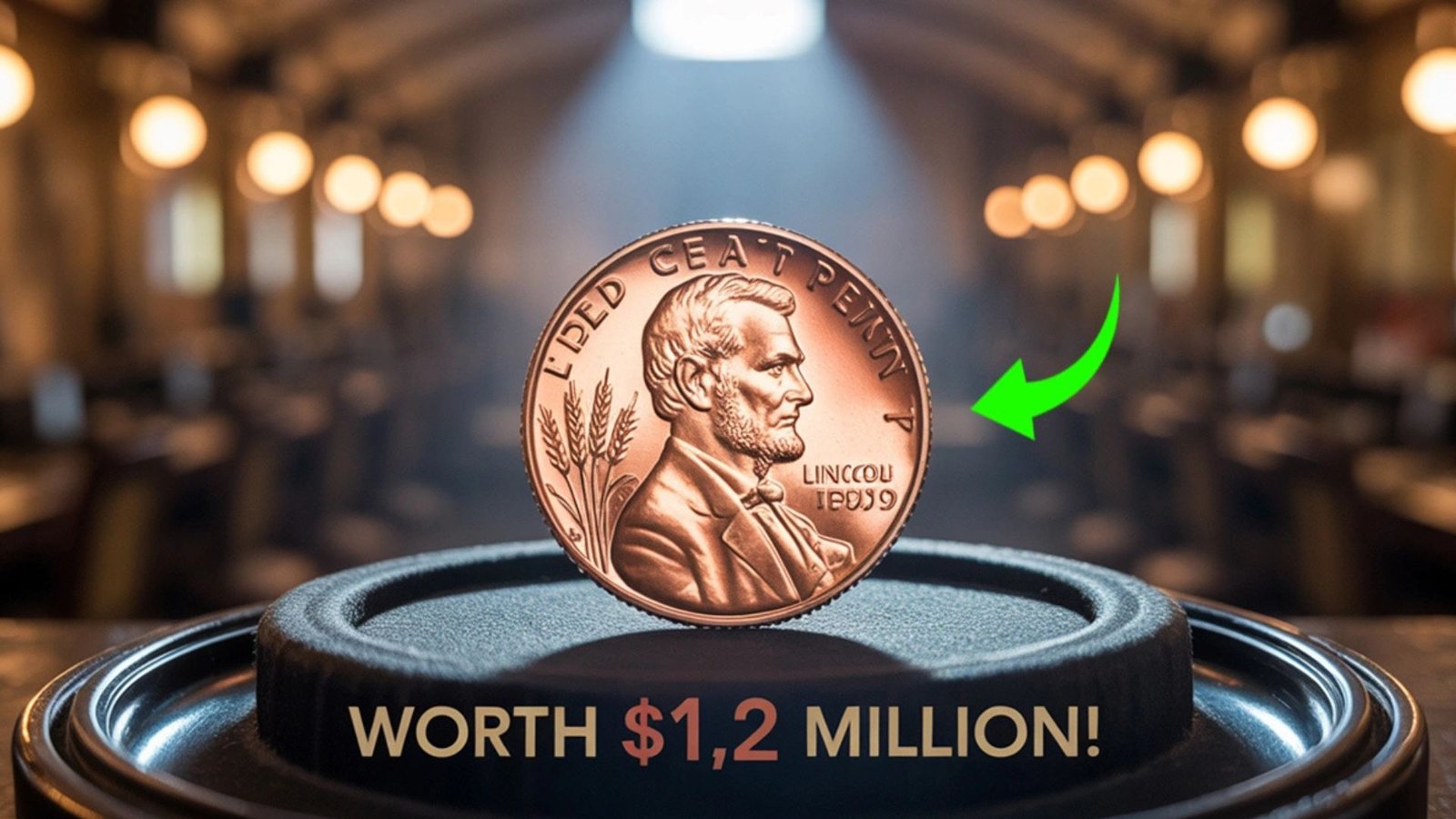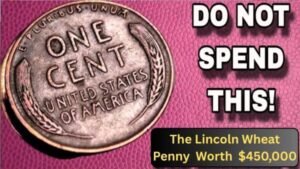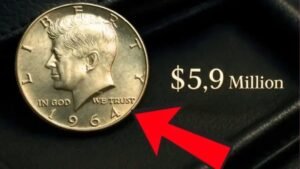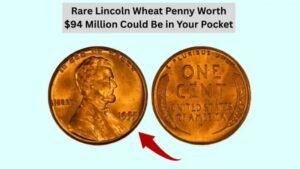Before you toss that old penny into a change jar, stop and take a closer look! The Lincoln Wheat Penny, minted from 1909 to 1958, might seem like just a cent, but rare versions, like the 1943 Bronze Penny, have sold for up to $1.2 million at auctions. With some of these coins still in circulation, you could have a fortune in your pocket. This SEO-optimized guide explains how to spot a valuable Lincoln Wheat Penny, why it’s so special, and how to turn your penny into a life-changing sum. Don’t spend it yet—it could be worth millions!
What Is a Lincoln Wheat Penny?
The Lincoln Wheat Penny, also called the Wheat Cent, is a one-cent coin produced by the U.S. Mint from 1909 to 1958. Designed by Victor David Brenner, it features Abraham Lincoln’s portrait on the front (obverse) and two wheat stalks on the back (reverse). Most are worth a few cents, but rare dates, errors, or special varieties can fetch thousands or even millions due to their scarcity and historical value.
Why Are Some Lincoln Wheat Pennies So Valuable?
The value of a Lincoln Wheat Penny depends on several factors:
- Rare Dates: Years with low mintage, like 1909-S or 1931-S, are highly sought after.
- Minting Errors: Mistakes like the 1943 Bronze Penny or doubled die errors increase value.
- Condition: Uncirculated coins (like new) graded by PCGS or NGC fetch higher prices.
- Material: Some 1943 pennies were mistakenly made of bronze instead of steel, making them ultra-rare.
A 1943 Bronze Penny in top condition sold for $1.2 million in 2024, making it one of the most valuable U.S. coins.
Rare Lincoln Wheat Pennies to Look For
Here are the top Lincoln Wheat Pennies that could make you rich:
1943 Bronze Penny
In 1943, pennies were made of steel due to copper shortages during World War II. However, a few were accidentally struck in bronze at the Philadelphia, Denver (D), or San Francisco (S) Mints. Fewer than 20 are known, with values ranging from $100,000 to $1.2 million for uncirculated examples.
1909-S VDB Penny
The 1909-S VDB, with the designer’s initials “VDB” on the reverse, had a low mintage of 484,000. In good condition, it’s worth $700–$2,000, and uncirculated coins can fetch $25,000+.
1955 Doubled Die Obverse
This error shows doubling in the date and “LIBERTY” on the obverse. About 20,000–24,000 were made, with values from $1,000 in worn condition to $125,000 in mint state.
1931-S Penny
With a mintage of 866,000, the 1931-S is a rare date. It’s worth $75–$500 in circulated condition and up to $8,000 uncirculated.
How to Spot a Valuable Lincoln Wheat Penny
To find a rare penny, check these details:
- Year: Look for 1909, 1931, 1943, or 1955 on the obverse.
- Mint Mark: Found below the date. “S” (San Francisco) or “D” (Denver) can indicate rarity; no mark means Philadelphia.
- Material: Use a magnet for 1943 pennies. Steel sticks; bronze doesn’t.
- Errors: Check for doubled text or images with a magnifying glass.
- Condition: Uncirculated coins with sharp details are worth more.
Avoid cleaning or polishing, as this can ruin the coin’s value. Compare your penny to images on PCGS or NGC.
Market Value of Rare Lincoln Wheat Pennies
Most Wheat Pennies are worth $0.01–$10, but rare varieties command high prices:
| Coin Type | Estimated Value | Key Feature |
|---|---|---|
| Regular Wheat Penny | $0.01–$10 | Common, no errors |
| 1943 Bronze Penny | $100,000–$1.2M | Struck in bronze, not steel |
| 1909-S VDB Penny | $700–$25,000+ | Low mintage, VDB initials |
| 1955 Doubled Die Obverse | $1,000–$125,000 | Doubled date and “LIBERTY” |
| 1931-S Penny | $75–$8,000 | Low mintage, San Francisco Mint |
Values depend on condition (graded MS60–MS70) and rarity.
Why Are These Pennies Still in Circulation?
Millions of Lincoln Wheat Pennies were minted, and many remain in change jars, bank rolls, or old collections. Errors like the 1943 Bronze Penny slipped into circulation due to wartime production issues. Coin roll hunting, popularized on platforms like TikTok, has collectors searching through rolls for these rare finds, keeping the hunt alive in 2025.
How to Sell a Rare Lincoln Wheat Penny
If you find a potential treasure:
- Inspect Details: Check the year, mint mark, material, and errors.
- Authenticate: Send it to PCGS or NGC for grading and certification.
- Sell Smart: Contact auction houses like Heritage Auctions or sell on eBay after grading.
Handle coins carefully to avoid scratches, and consult a coin dealer for guidance.
Word Translation Table
| Complex Word | Simple Meaning |
|---|---|
| Obverse | Front side of a coin |
| Reverse | Back side of a coin |
| Mint Mark | Letter showing where the coin was made (e.g., S for San Francisco) |
| Uncirculated | Coin with no wear, like new |
| Doubled Die | Error with doubled images or text |
| Numismatist | Person who collects coins |
FAQs
How do I know if my Lincoln Wheat Penny is valuable?
Check for years like 1909, 1931, 1943, or 1955, and look for mint marks (S or D) or errors like doubled text. For 1943 pennies, test with a magnet—bronze doesn’t stick.
What makes the 1943 Bronze Penny worth $1.2 million?
It was mistakenly struck in bronze instead of steel, with fewer than 20 known. Its rarity and condition drive its high value.
Where can I sell a rare Wheat Penny?
Use auction houses like Heritage Auctions or Stack’s Bowers, or sell on eBay after grading by PCGS or NGC. Coin shops can also appraise.
Are all Wheat Pennies valuable?
No, most are worth $0.01–$10. Only rare dates (1909-S, 1931-S), errors (1943 Bronze, 1955 Doubled Die), or uncirculated coins are valuable.
Conclusion
The Lincoln Wheat Penny could turn your spare change into a fortune, with rare versions like the 1943 Bronze Penny worth up to $1.2 million. Check your coins for key years (1909, 1931, 1943, 1955), mint marks, or errors like doubled designs. With some still in circulation, you might find one in a bank roll or old jar. Authenticate with PCGS or NGC and sell through trusted auction houses to maximize value. Don’t spend that penny yet—it could be a collector’s dream! Visit Heritage Auctions or PCGS for grading and auction details.




